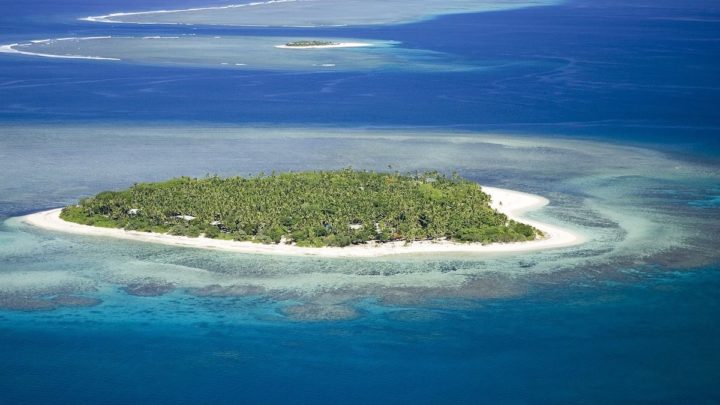Ratification of United Nations treaty banning atomic weapons honors a half-century of anti-nuclear activism
By Vanessa Griffen and Talei Luscia Mangioni
On the streets of Suva in the 1970s it was the young who carried the cause. In afros, headbands and bell-bottom jeans they handed out pamphlets and printed newsletters, performed skits and variety shows, gave lectures, and led rallies on the streets of Fiji’s capital.
Crowds heard firebrand speeches from church leaders, trade unionists, university staff and student leaders.
The Atom (Against Testing on Mururoa) committee, formed in Fiji in 1970, was dedicated to educating, creatively but powerfully, the Fijian public of the dangers of radioactive fallout from French testing and colonialism in the Pacific.
They were resisting what Father Walter Lini, later Vanuatu’s first prime minister, described as “nuclearism” – an amalgamation of “nuclear” and “colonialism” – in the Pacific island territories by the United States, Britain, and France with their nations’ permanently harmful nuclear weapons testing.

The fight has been long. France would continue nuclear testing on atolls in Tahiti until 1996, and Pacific islanders fought too for justice over the radioactive legacy of US and British tests in the 1950s in the Marshall Islands and Kiribati. Their damaging environmental, social and health inheritance remains today.
But July 7 marked an important milestone for Fiji. Overnight it deposited its instruments of ratification for the Treaty on the Prohibition of Nuclear Weapons (TPNW) in the United Nations.
Fiji was one of a majority of 122 nations that voted to adopt the historic treaty banning nuclear weapons three years ago in the UN general assembly.
Fiji became the 39th country to ratify the treaty: 50 are needed to bring it into force, outlawing nuclear weapons all around the world. (Editor’s note: as of publication date there are only six more ratifications to go.)
While the treaty is rejected by the world’s nuclear powers, who maintain their stockpiles and nuclear weapons programs, its proponents argue the treaty is a powerful moral persuasion – in the vein of the cluster and landmine conventions – for nuclear states to disarm, and to establish an international norm prohibiting nuclear weapons’ development, possession and use.
Fiji’s ratification carries particular significance. It comes after five long decades of grassroots activism from women’s, church, national and community groups, and from teachers, unions, students and pan-Pacific organisations, joined in steadfastly rejecting the effects of nuclear weapons testing in the Pacific.
In April 1975 the first ever regional Conference for a Nuclear-Free Pacific was held in Suva, at the campus of the University of the South Pacific, the Pacific’s first regional university.
In an age of expensive long-distance travel, 90 delegates came to discuss the issue of the nuclear weapons testing causing widespread pollution and endangering the Pacific and neighbouring countries.
It was at this meeting that the artificial distance of Pacific islanders from each other was erased. The arbitrary colonial divisions carving up their region into north and south, Francophone and Anglophone, island colonies and newly independent states, were shattered.
Pacific islands activists from the North Pacific met those from the South. Aboriginal people met Hawaiians; Micronesians met Kanaks; and Gilbertese met New Hebrideans. International organisations and Japanese, Australian and New Zealand peace and environment activists added to the mix.
One critical decision was made at the end of this historic meeting: it was Pacific islanders who would decide their view of nuclear testing.
For many, their fundamental cause was ongoing colonialism in the Pacific region.
After hearing testimonials from 90 delegates the meeting was adamant that nuclear testing in Te Ao Maohi (French Polynesia) had to stop.
Many delegates thought nuclear testing represented a racist disregard for Pacific peoples and their position in the world. The US nuclear tests in Micronesia (then a United States Trust Territory), and British tests in the Gilbert Islands, along with ongoing French nuclear tests, cemented the view that Pacific peoples had effectively been nuclear bomb test guinea pigs.

As Vanessa Griffen wrote in an article in 1970 for Pacific Islands Monthly, an overwhelming “sense of unity, support and above all else the will to fight together” emerged, the beginnings of an activist network, the Nuclear Free and Independent Pacific movement (NFIP), that would last for decades.
Today, we applaud Fiji’s ratification of the Treaty on the Prohibition of Nuclear Weapons. It played an essential role in the treaty’s drafting and in its complex negotiations.
But more fundamentally Fiji helped establish a long-standing tradition of Pacific solidarity and public abhorrence of nuclear weapons.
The Pacific NFIP movement, its pioneering Atom committee, its scientists educating the public: all had their genesis in the newly-independent Fiji.
For many in the Pacific, memories of the impact of nuclear weapons testing still exist, its legacies continue, and the Pacific-wide solidarity that started in Fiji carries lessons for the world.
Nuclear justice is a Pacific island term that remains well understood. We have our own “lest we forget”.
This article first appeared in The Guardian and is republished with kind permission of the Pacific editor.
Vanessa Griffen was a NFIP founding member as a student activist and is now a Fiji Campaigner in the International Campaign to Abolish Nuclear Weapons, 2017 Nobel Peace Laureate.
Talei Luscia Mangioni is a young Fijian and Italian PhD researcher based at the Australian National University. Her scholarship by creative works aims to chart the Nuclear Free and Independent Pacific (NFIP) movement across Oceania through historical ethnography, weaving archival records and material objects with oral histories of activists and artists.
Headline photo of Fijian Islands, by Tavyland/Wikimedia Commons










